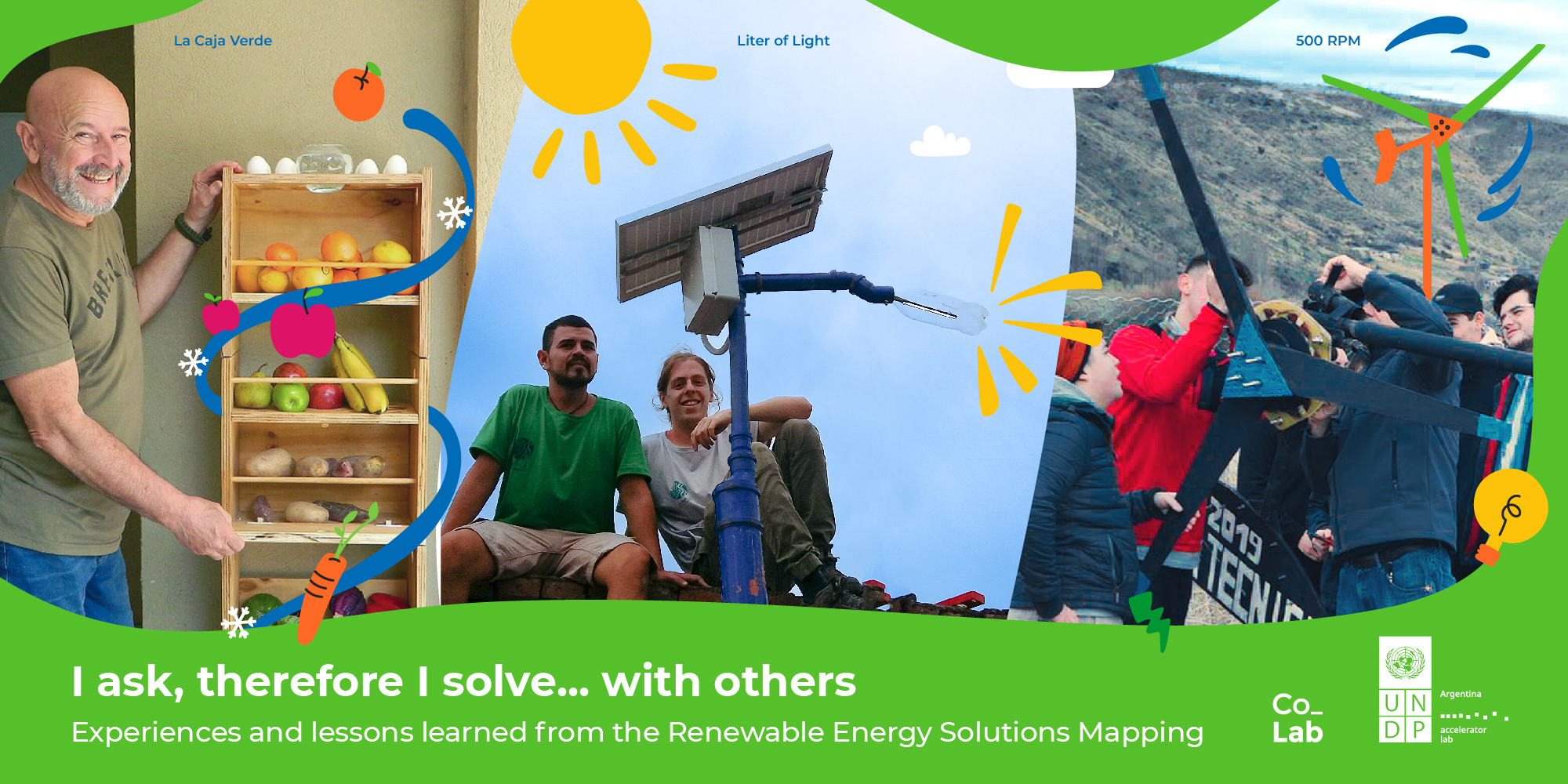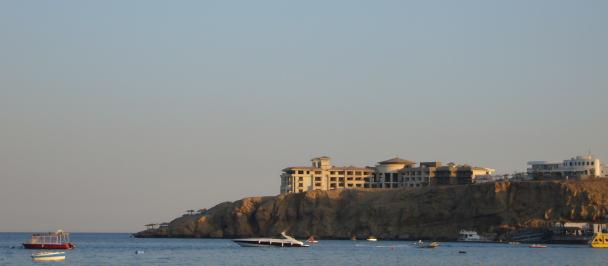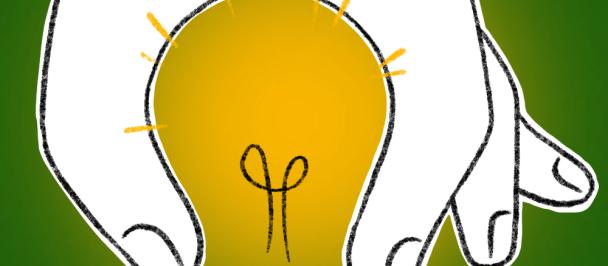Experiences and lessons learned from the Renewable Energy Solutions Mapping
I ask, therefore I solve...with others
13 de Febrero de 2023

All the solutions we map stick to the same principle: People or groups trying to solve a problem that worries or affects them reach solutions using simple and creative resources. To that end, they delve into what other people have done before with the same problems and concerns. During this journey and before arriving at a solution, these individuals reflect on how they can improve their quality of life or contribute to development. The Renewable Energy Solutions Mapping is not the exception and there are three stories—featured in the People Powered Campaign from the Accelerator Lab Network—that illustrate it.
Each of these stories was based on specific questions that led to different journeys. How can a child study without lights? How to light up unsafe neighborhoods? How is it possible to live without a refrigerator? How were vegetables and fruits stored before its invention? How does the most widely used self-build (DIY) wind turbine work? How can it be brought to Argentina? Be our guest and read on.
A light bulb went off...differently: Liter of light Argentina. A group of people interested in providing lighting solutions for worse-off communities start a new national chapter in Liter of light. This initiative, launched in the Philippines, uses parts that can be found locally: simple power supplies, reused panels, and batteries to generate renewable and low-voltage lighting. The project volunteers also teach communities how to reuse plastic bottles and locally sourced materials to light up their homes, shops, and streets.
Digging into the past served to imagine the future: La Caja Verde (The Green Box) One day, just like any other, Héctor Pereyra realized that his refrigerator had stopped working. Even though he got used to living without it, he wanted to know how vegetables and fruits were stored in the past. Thus, he started researching this topic and, together with Tali Signorile, came across and implemented again a preservation method from the 18th Century. Along the way, they also listened to advice from those who knew how to live without a refrigerator. From that process, La Caja Verde was created. This invention is based on that knowledge and works with allelopathy (the interaction between plants or between plants and microorganisms) plus salt and water. It can store vegetables and fruits for more than two weeks without using electricity.
An open and available opportunity was taken: 500 RPM. An engineer and an anthropologist—Esteban Van Dam and Luciana Proietti—were fascinated by the idea of working with an open patent wind turbine, designed with the principles of self-building, simplicity, and durability in mind and widely used around the world. Esteban was so excited about this project that he traveled to Ireland with a suitcase full of questions to learn directly from its inventor, Hugh Pigott. Thanks to the lessons learned, they now work at 500 RPM to spread knowledge and share the technology focusing on the needs of small rural economies.
Since the problems of energy access and/or distribution are not completely solved in our societies, these types of technologies—due to their lower costs, simple materials, or open patent/hardware—offer a great opportunity to promote multiple smaller-scale interventions in different communities and in a decentralized manner. However, we know that having access to technology does not mean having a solution. The people affected by problems should use and value technology to be considered a solution.
Therefore, one of the major challenges related to Renewable Energy Solutions Mapping is the adoption and ownership of these technologies by communities and/or users. This challenge can produce behavior changes which must not be underestimated since cultural values and habits are key elements in the daily activities requiring energy (lighting up and heating homes, preserving food, taking a bath or washing clothes with a nice water temperature, cooking without smoke indoors, etc.) Another significant challenge has to do with the inclusion of the communities in the problematization, design, and implementation processes of projects where members can participate and learn to use, maintain and repair devices, among other actions. If members do not know how to do this, obsolescence becomes a real concern.
In short, a key factor in contributing to a positive impact on renewable energy initiatives is the knowledge exchange between people who have a deep understanding of their problems and those who have the technical knowledge and use it to develop solutions. For this reason, not only are we interested in knowing the processes or factors fostering the adoption of certain technologies in communities, but also how to promote approaches or solutions that—in themselves—are adaptable to the context or the habits of those who need them.

 Locations
Locations

